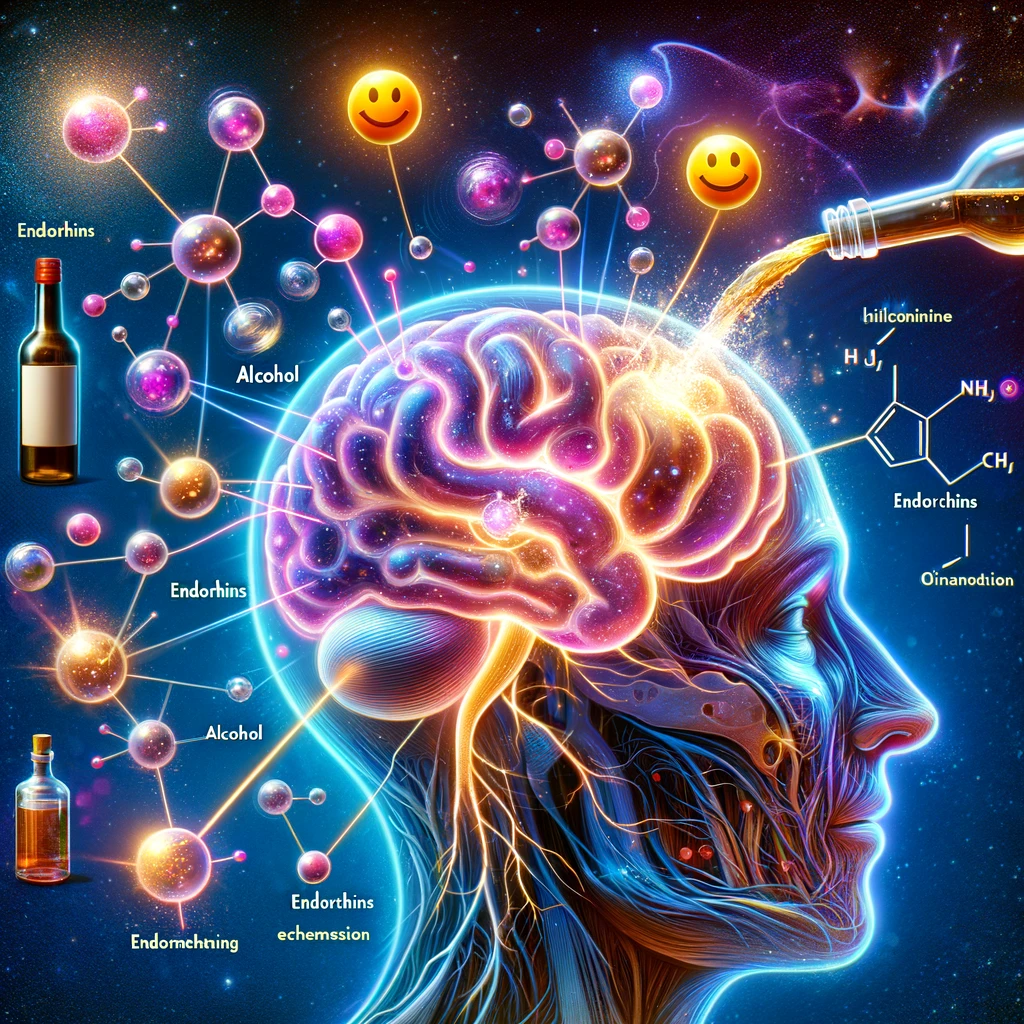
The Biochemistry of Alcohol and Endorphins
The Intriguing Interplay Between Alcohol and Endorphins: Unveiling the Biochemistry
Key Takeaways:
Understand the complex relationship between alcohol consumption and endorphin release.
Discover how this biochemical interaction affects our mood and behaviours.
Learn how treatments like The Sinclair Method utilise this knowledge to aid recovery from alcohol use disorder (AUD).
Explore resources like a free screening call, our Facebook community, and an informative minicourse for further support and information.
The consumption of alcohol and the release of endorphins in the brain are intricately linked, creating a biochemical reaction that can influence our feelings of pleasure, pain, and overall well-being. This article delves into the fascinating world of the biochemistry of alcohol and endorphins, shedding light on how this understanding is pivotal in approaches like The Sinclair Method for treating alcohol use disorder (AUD).

The Biochemical Dance: Alcohol Meets Endorphins
What are Endorphins? Endorphins are neurotransmitters produced in the brain that act as natural painkillers. They are also known for their ability to produce feelings of pleasure and euphoria, often referred to as a "runner's high."
Alcohol's Effect on Endorphins When alcohol is consumed, it triggers the release of endorphins in various parts of the brain, including areas responsible for processing pleasure and reward. This release contributes to the initial feelings of relaxation and happiness often associated with drinking.
The Double-Edged Sword: Pleasure and Dependence
Immediate Effects:
Mood Enhancement: The initial rush of endorphins can improve mood and create a sense of well-being.
Pain Reduction: Endorphins have pain-relieving properties, which can contribute to the numbing effects of alcohol.
Long-term Implications:
Tolerance: Over time, the brain may require more alcohol to achieve the same endorphin release, leading to increased consumption.
Dependence: The pursuit of the endorphin-mediated pleasure from alcohol can contribute to the development of AUD.
Harnessing Biochemistry for Recovery: The Sinclair Method
The Sinclair Method is a treatment approach that leverages our understanding of the biochemistry of alcohol and endorphins. By using medication like Naltrexone, which blocks the endorphin receptors in the brain, this method aims to reduce the reinforcing pleasure associated with alcohol consumption, thereby aiding in the recovery process.
How It Works:
Prevention of Endorphin Release: Naltrexone prevents alcohol-induced endorphin release, diminishing the pleasure derived from drinking.
Reduction in Craving: Over time, as the brain learns to dissociate alcohol from pleasure, cravings for alcohol diminish.
Promotion of Healthier Habits: Individuals are encouraged to engage in activities that naturally boost endorphins, such as exercise, as part of a comprehensive recovery plan.
Moving Forward: Your Path to Recovery
Understanding the biochemistry of alcohol and endorphins not only illuminates the complexities of AUD but also opens the door to targeted treatments that can offer real hope for recovery. For those seeking support, resources such as a free screening call, our supportive community on Facebook, and an enlightening minicourse on the Sinclair Method are invaluable tools on the journey to reclaiming control over one's life.
This exploration into the biochemistry of alcohol and endorphins highlights the importance of understanding the underlying factors that contribute to AUD. By leveraging this knowledge, treatments like the Sinclair Method offer a scientific and compassionate approach to overcoming alcohol dependence, paving the way for a healthier and more fulfilling life.